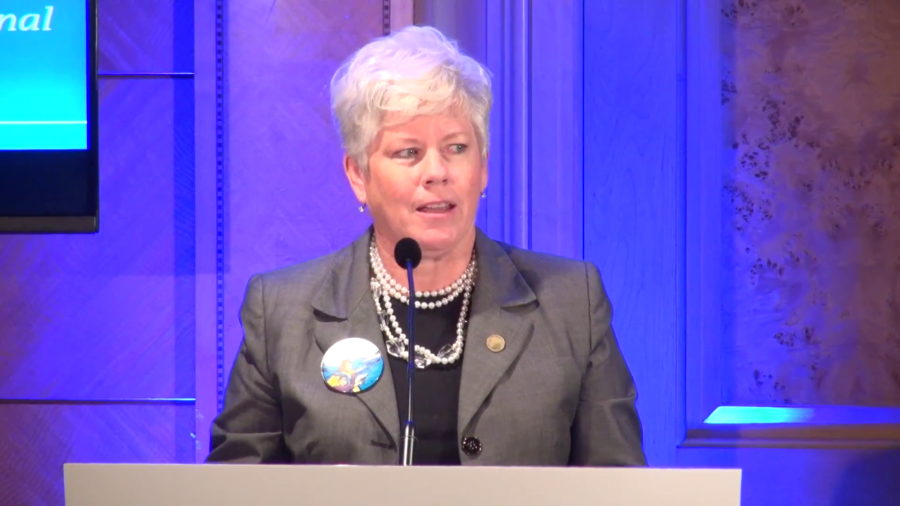Susan Estrada: Thank you to the Internet Society for this wonderful honor today. I was lucky to be in the right place at the right time. In 1985 and ’86, I installed a really darn fast 56Kbps wide area network for the San Diego Supercomputer Center. Then after that, thanks to Dennis Jennings my fellow pioneer today, I was involved with installing the first NSF connections between the centers, that were a whopping one 1.5Mbps. And vendors told me at that time that nobody had that much data.
The natural next step, in 1987, was to create an Internet service provider called the California Education and Research Federation Network, also known as CERFnet, because those darn people in the Netherlands took the real “surf” from us in California. My team developed a number of notable firsts for the Internet, including the first deployment of dial-up IP. (Sounds so 1982, doesn’t it?) Accounting reports for customers, and we were the first network to offer twenty-four hour, seven day a week monitoring of the network.
One of our earliest commercial customers was a small startup named Qualcomm. And we made some bold choices like purchasing equipment from another small startup named Cisco and provided them with a big boost. We were 10% of their gross revenue for 1988, and they didn’t know how to fulfill our order. And working with PSINet and UUnet, we formed the interconnection enabling the first commercial Internet traffic via the Commercial Internet Exchange, also known as the CIX. This accomplishment, which seems so logical now, was a very radical idea at the time and there was a lot of brick-throwing going on.
My team and I spent a lot of time as well devising ways to broaden the use of the Internet. We brought teachers and librarians online. We created Captain Internet, a female cartoon character, to humanize the Internet and to encourage regular people to use the Internet.
Today I still spend time devising strategies to get the underserved online. In particular I’ve been working to broaden the use of Internet by older adults, those sixty-five and older, because the Internet is increasingly important to successful aging in its core elements: socializing, learning, and being able to contribute to the greater good.
I would also like to thank my husband Don, as well as my digital native children Chris and Megan, who teach me everyday new and interesting ways to use the Internet, because it is the great collaboratory. Working and collaborating together, we can continue to make Captain Internet’s vision come true. Another victory for truth, connectedness, and the Internet way. Thank you very much for this honor.
